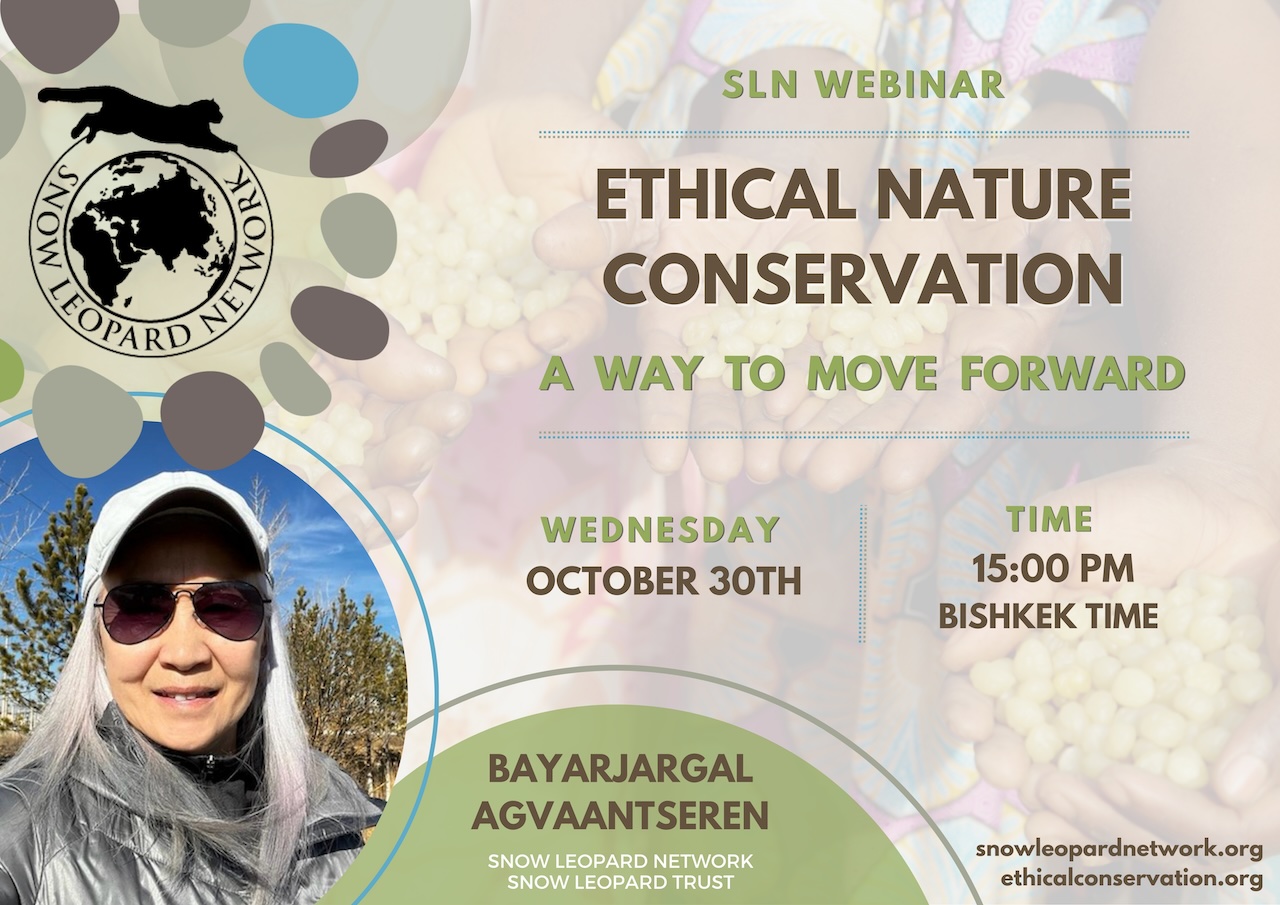We invite you to join us for our upcoming webinar with Tshiring Lhamu Lama, the founding director of Snow Leopard Journey and Snow Leopard Sisters.
About the Talk:
As the founding director of Snow Leopard Journey and Snow Leopard Sisters, Tshiring is on the frontlines of snow leopard conservation in the Dolpo Himalaya. Through innovative, sustainable, and practical projects, she works to encourage, empower, engage, and employ local youth by promoting eco-tourism, sustainable livelihoods, and environmental education. Tshiring’s efforts aim not only to shift local perceptions of the snow leopard, transforming it from a threat into a vital asset for both conservation and community well-being, but also to end the retaliatory killings of snow leopards in the Dolpo Himalayas.
 Khata-Conservation Awareness – PC – Snow Leopard Journey – 2024
Khata-Conservation Awareness – PC – Snow Leopard Journey – 2024
 Snow Leopard Trek – Dr. Rodney Jackson – PC – (Snow Leopard Journey) – 2022
Snow Leopard Trek – Dr. Rodney Jackson – PC – (Snow Leopard Journey) – 2022
About our Speaker:
Tshiring Lhamu Lama was born and raised in the high-altitude landscapes of Dolpo, one of the most remote regions of the Nepal Himalayas. She is the first woman from her Dolpo community to earn a Master’s degree in Natural Resource Management, a milestone achieved through the Chandra Gurung Memorial Fellowship 2014, supported by WWF Nepal. Deeply connected to her homeland—where traditional pastoralism and snow leopards co-exist—she recognized the urgent need for sustainable solutions to conserve snow leopards while also addressing the needs of local herders who share the land with these vulnerable snow leopards.
About our Facilitator:
Kayley Bateman joined the Snow Leopard Conservancy team as Programs Manager in July of 2023. She coordinates SLC’s conservation, education, and applied research programs and serves as the primary liaison between SLC and its partners. Kayley has a Bachelor’s degree from the University of Illinois in Animal Science and a Master’s of Art in Biology from Miami University’s Project Dragonfly. Her involvement in Project Dragonfly’s Global Field Program focused on working effectively across diverse ecological and social settings to foster change through community-engaged education, scientific inquiry, environmental stewardship, and global understanding. Last fall, Kayley traveled to Nepal with the Snow Leopard Conservancy to facilitate the One Health – One Welfare program, an interdisciplinary approach aimed at strengthening local capacity to enhance the well-being of both animals and people in Nepal. Before joining the Conservancy, Kayley spent 15 years as an animal care specialist working directly with snow leopards, tigers, bears, and other wildlife in zoological settings.
Foxlight (Night Predator Deterrent) – PC (Snow Leopard Conservancy and Wendy Wood) – 2021
Date/Time:
Wednesday, 11th December at 20:00 PM (Bishkek time)
Location:
ZOOM, to join this talk, REGISTER HERE
Please note:
- If you have never used Zoom before, we recommend that you try the link 10 minutes before the start of the lecture.
- Please feel free to write questions in the comment area and there will be time for questions/discussion at the end of the talk.
- Please note that the session will be recorded and later featured on the SLN website. If you have concerns about this please let us know before the session















